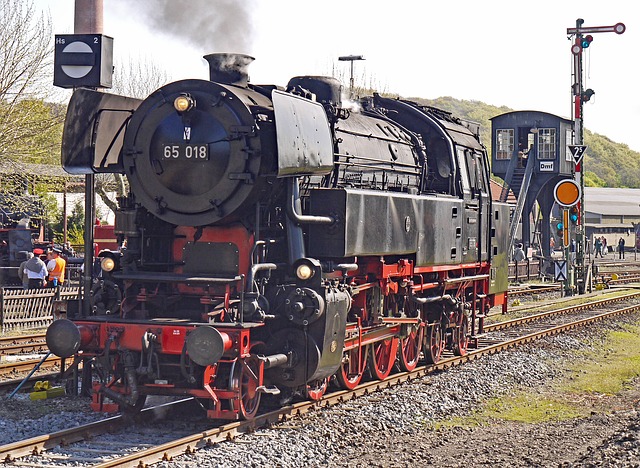A History Of Billings Montana
Early History—
The core downtown of Billings Montana, as well as most of the rest of the city, is located in Yellowstone Valley. This is a canyon that the Yellowstone River has carved. The Pictograph Caves are located around five miles south of the Billings downtown area. There are more than 100 pictographs (rock paintings) contained in the caves, with the oldest one being more than 2,000 years old. The Billings area has been home to the Crow Indians since around 1700. The current Crow Nation is located south of Billings.
Location—
Where Billings MT is located today formerly was called Clark's Fork Bottom. It was a hub used to haul freight to Musselshell Basins and Judith. Those were some of the Montana Territory's most productive areas at that time. The plan involved running freight to Alkali Creek, which is part of the Billing Heights area now, and then over to the basins as well as For Benton located on the Hi-Line.
The Railroad Arrives—
Coulson was the first town to be formed in the Yellowstone Valley in 1877 by settlers from Montana Territory's Gallatin Valley area.
After the railroad came to the Coulson area, residents thought the town would definitely become a hub for the railroads and Coulson would soon become the largest city in the Montana Territories. The railroad had claim only to odd sections and two side-by-side sections around two miles west of Coulson. Since the railroad could make a lot more money through developing a new town on the two sections, it made the decision to create a new town called Billings.
Billings Established—
The town of Billings was established in 1882 and named after Fredrick H. Billings, president of the Northern Pacific Railway. The city was formed by the railroad as its western railhead for its further westward expansion. Initially, the new town had just three buildings. However, it had grown to more than 2,000 in only a couple of months. That inspired the nickname of Billings to be the Magic City of Montana since it appeared overnight just like magic.
By the census of 1910, the population of Billings had increased to 10,031 and ranked as the nation's sixth fastest-growing community. During the early part of the twentieth century Billings developed into an energy center after oil fields were discovered in Wyoming and Montana. Then large coal and natural gas reserves were discovered to secure the city's first rank in energy.
Billings grew rapidly from the time it was founded until after World War II, and it became the region's major cultural, medical, and financial center.
Major Growth—
Billings experienced major growth in its core downtown area during the 1970s and 1980s. During this time, the first high-rise buildings in Montana were built. A Sheraton Hotel with 22 floors was built in 1980. After it was completed, the Brick Institute of America declared it to be the world's tallest brick masonry load-bearing building. Other major buildings were built during the 1970s and 1980s in the core downtown area; the First Interstate Center, which was the five-state area's tallest building, numerous city-owned parking garages, the Trans-western Center, the Metra-Park arena, the Sage Tower, the Granite Tower, and the Norwest Building (currently Wells Fargo).
Interstate Highway System Helps Development—
During the 1970s large parts of Montana's interstate system were completed, which resulted in Billings becoming the shopping destination for an increasingly larger area. The Billings area was new shopping centers and shopping districts developed during the 1970s and 1980s. Two new malls also were developed. Rimrock Mall, on the city's then west end, was enlarged and redeveloped. West Park Plaza was built in midtown and Cross Roads Mall in Billings Heights. During this time, there were also a number of new business parks developed on the west end of the city.
The city's service sector increased during the 1990s, with new shopping centers being developed and built around major big box stores like Office Depot, Wal Mart, and Target, which all built several outlets within the Billings area.
A Business Park Grows—
During the 21st century, operations centers in Billings' downtown core and business park were developed by national companies like First Interstate Bank, Wells Fargo, and GE. The downtown core also experienced new growth along with many new buildings, MET Transit Center, parking garages, and Skypoint was completed in 2002. There were additional shopping centers developed during the 21st century. Shiloh Crossing was one of these new centers, which brought Montana its first Kohl's store. Other new centers included Billings Town Square, which was the first open-air shopping mall in Montana and offered the first West Park Promenade and Cabela's in Montana. Billings was named as the best small city for starting a business by Fortune Small Business Magazine in 2009.
Economic Outlook—
While the country has undergone a recession, the economy in Billings has remained strong. Housing starts and construction have both been up along with large investments by national companies into the community along with new major road construction projects. Montana's economy is a lot healthier compared to most states. While western Montana has suffered from a real estate crash and the timber industry's near demise, North Dakota and eastern Montana have experienced an energy boom from coal and the largest discovery of oil in U.S. history with the Bakken formation. Billings is the center of economic growth for the state of Montana.


